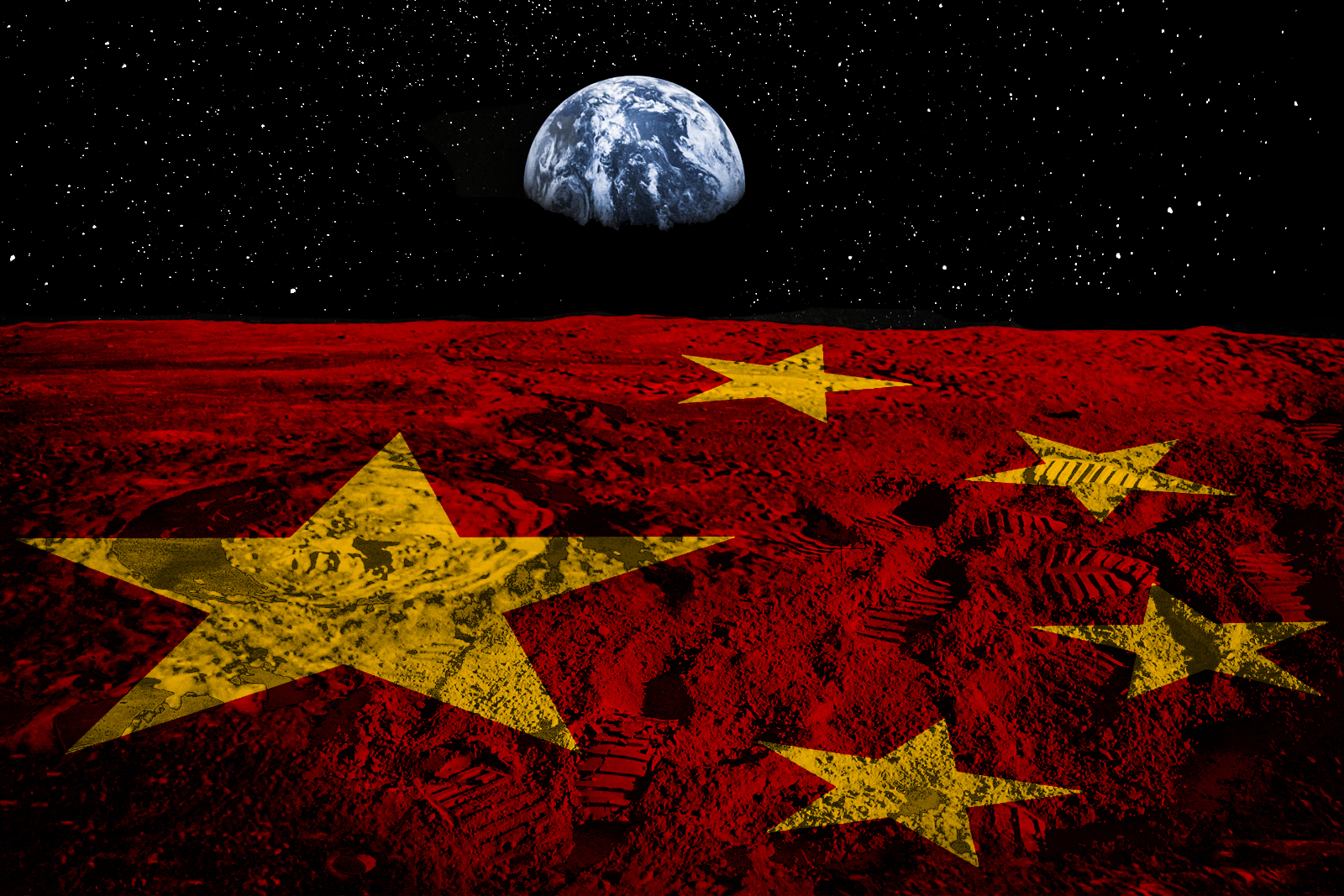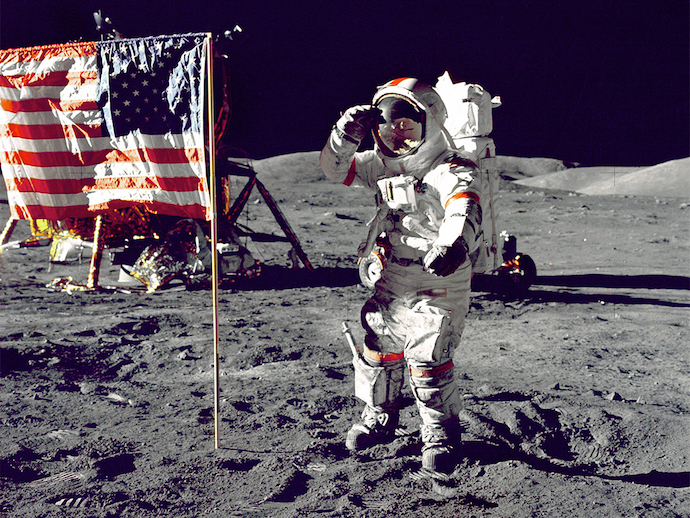
China Sets Sights on the Moon Again as New Space Race Intensifies
As the United States celebrates the Memorial Day weekend, a Chinese lunar lander from their Chang’e-6 mission has successfully entered the Moon’s orbit. The lander is set to touch down on the far side of the Moon in early June, aiming to collect 2 kilograms of rock samples—a historic first for this unexplored region of the Moon.
China’s latest Moon mission comes just over three years since their Chang’e-5 mission successfully returned crucial lunar material to Earth in December 2020. The material, from the northern hemisphere of the Moon’s near side, contained newly discovered minerals. Chinese scientists were particularly interested in the titanium compounds of trigonal and triclinic Ti2O because they have never been seen in natural samples on Earth.
Titanium plays a crucial role in various industries due to its unique properties. It is commonly found in electronics, where it is utilized in capacitors and batteries. Moreover, titanium is frequently paired with other materials to enhance its stability and properties. For instance, it is often used as an alloying agent with metals like aluminum, molybdenum, and iron in aerospace applications such as aircraft, missiles, and spacecraft. Thanks to its low density, titanium can withstand extreme temperatures. In the field of medicine, titanium is indispensable for procedures like hip replacements and dental implants, as it is biocompatible and allows for bone growth. I have had titanium implants in both my upper and lower jaws for more than two decades without any issues.
We don’t yet know what secrets the new Chang’e-6 rocks will uncover, but scientists aim to better understand why the near and far sides of the Moon are so geologically different. China plans on landing on one of the few volcanic plains, the Apollo Basin, located on the far side. America’s Apollo missions all visited the nearside. The far side is still a relatively unknown place. The rock samples should allow scientists to directly test several theories about the Moon’s formation and history. It is also believed the basin will contain diverse materials including large amounts of titanium.

Lunar mining, as part of the lunar economy, is a hot topic due to the Moon’s abundance of valuable resources. The list is lengthy, but it includes water-ice, solar power, helium-3 for future nuclear fusion, and rare Earth minerals like platinum, titanium, and others. The U.S. Geological Survey (USGS) has neatly broken them down into three categories: energy, mineral, and water. It is crucial to note that certain lunar resources will be indispensable for inhabitants temporarily residing on the Moon to sustain human life, refuel spacecraft and vehicles, and build the necessary infrastructure.
There are some physical pros and cons of mining the Moon. Most resources are abundant, like solar power, and mineral resources largely in the form of loose rock. Gravity is only 1/16th of that of Earth, which should make it easier to remove resources from the Moon’s terrain. Furthermore, the pressure on the Moon, although still very deadly, is more manageable compared to other places like Mars. The only people ever to die in space were three Russian cosmonauts in 1971 who were exposed to a near-perfect vacuum, suffering massive brain hemorrhaging.
However, operating for extended periods on the Moon, like anywhere in Space, poses considerable risks to the human body. Astronauts engaged in space travel are exposed to a multitude of stressors, which NASA condenses into the acronym “RIDGE,” short for Space Radiation, Isolation and Confinement, Distance from Earth, Gravity fields, and Hostile/Closed Environments.
NASA is taking these stressors and everything it has learned since 1958 into account, as it watches China’s lunar accolades pile up. America and its allies want to close the gap.
It didn’t make many headlines, but in February, America had its first moon landing since 1972. Intuitive Machines, a Houston-based private company contracted by NASA, successfully landed their moon lander, Odysseus, on the lunar surface. The touchdown occurred in a crater known as Malapert A, located near the south pole, where the presence of water ice is believed to exist. It was launched into space via a SpaceX Falcon 9 rocket. NASA paid Intuitive $118 million to carry out the Moon landing, as part of their Commercial Lunar Payload Services (CLPS) program.
NASA started implementing CLPS in 2019 to support its Artemis program. The goal of CLPS is to find lunar resources to facilitate a long-term crewed base on the Moon. Again, these resources are crucial for essentials like life support, rocket fuel, and energy, and to sustain a historic and transparent lunar colony as spelled out in the Artemis Accords.
At the time of writing, America and 39 other countries have signed the Artemis Accords. This means they join NASA’s lunar program and agree to a nonbinding set of principles grounded in the Outer Space Treaty of 1967. The Accord aims to avoid conflict, ensure transparency, and have stipulations around the extraction and use of any lunar resources.
At the same time, China, Russia, and other countries are busy implementing their plans for their own International Lunar Research Station. China is no stranger to working with other countries. Their Chang’e-6 lunar mission included payloads from France, Italy, Pakistan, and Sweden. Beijing’s space diplomacy has been in high gear over recent years, even in certain African countries not typically associated with space.
The new space race is here, and China is on a roll. If all goes as planned, their current 53-day Chang’e-6 mission will end when their probe returns to the Earth later in June. China then plans to launch two separate missions to the south pole of the Moon in approximately 2026 and 2028 to prepare for their lunar base. Moreover, China wants to land a crew of taikonauts (Chinese astronauts) on the Moon by 2030.
America wants astronauts back on the surface of the Moon before the Chinese. However, with multiple variables in play like delays by corporate partners, predicting an exact date is almost impossible. The latest estimates are 2027, at the earliest.
No matter which nations or corporations succeed in sending their citizens or employees to the Moon first in the 21st century, there are still numerous inquiries to address and actions to take. Like mining on our planet, we will require “on-the-ground” lunar exploratory studies. On Earth, exploration typically involves mapping and surveying the terrain from the surface, testing samples of water and soil, and drilling.
These studies are crucial in determining the resources that lie beneath the Moon’s surface, as well as the challenges involved in extracting, transporting, and processing them. Only then can we calculate the return on investment. Should we bring these resources back to Earth? Or do we simply require the essentials for establishing a Moon base, as we venture further towards other celestial bodies like Mars?
At the rate this new space race is currently going, we won’t have to wait long for the precious answers that we seek.
